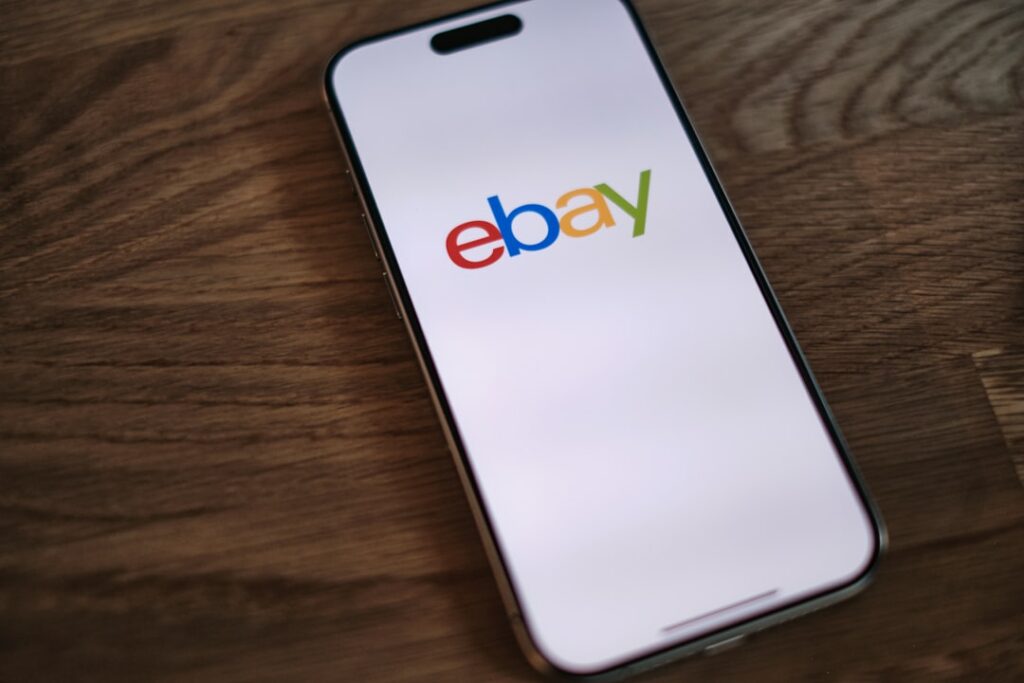Step 1: Set Up Your eBay Account and Research Products
Create Your eBay Seller Account
To begin selling on eBay, you first need to convert your existing eBay buyer account into a seller account, or create a new one if you don’t have one already. Navigate to eBay.com and click “My eBay” at the top right. If you’re not logged in, do so. Once logged in, go to “Selling” from the “My eBay” dropdown. You’ll be prompted to register as a seller. This process usually involves verifying your identity (often through a phone number or credit card) and linking a payout method, such as a bank account or PayPal. Ensure the name on your bank account matches the name on your eBay account for smooth transactions. Set up a secure password and enable two-factor authentication for added security.
Research Profitable Products to Sell
Before listing anything, dedicate time to product research. Start by looking at items you already own but no longer need – electronics, clothing, collectibles, or even unique household items. Use eBay’s “Advanced Search” feature to look up completed listings for similar items. Filter by “Sold Listings” to see what items actually sold for, not just what they were listed at. Pay attention to the condition of the sold items, the final selling price, and the shipping costs associated. This will give you a realistic idea of potential earnings. Consider niche markets or bundles of related items (e.g., a set of vintage video games) as these can often command higher prices than individual items. Tools like Terapeak (available through eBay Seller Hub subscriptions) can provide deeper insights into market trends and competitor activity.
Step 2: Prepare Your Items for Listing
Clean and Photograph Your Items Effectively
First impressions are crucial on eBay. Thoroughly clean every item you intend to sell. For electronics, wipe down surfaces, screens, and ports. For clothing, ensure it’s laundered, ironed, and free of stains or odors. For collectibles, gently dust and remove any smudges. Once clean, take high-quality photographs. Use a well-lit area, preferably with natural light near a window. A plain, neutral background (like a white sheet or wall) will make your item stand out. Take multiple photos from various angles: front, back, sides, top, bottom, and any labels or unique features. Include close-ups of any imperfections (scratches, dents, wear) as this builds trust and prevents disputes. Aim for at least 5-7 clear photos. You can use a smartphone camera, but ensure good lighting and focus.
Write Compelling and Detailed Product Descriptions
Your product description should provide all necessary information and entice buyers. Start with a clear and concise title that includes relevant keywords (e.g., “Apple iPhone 13 Pro Max 256GB Sierra Blue Unlocked Excellent Condition”). In the description body, begin with a brief overview. Then, detail the item’s condition meticulously, using specific terms (e.g., “Minor scuff on bottom left corner,” “Fully functional with no dead pixels”). List all specifications: brand, model, size, color, material, age (if applicable), and any included accessories. Mention what is NOT included if it’s commonly expected. Use bullet points for readability. Be honest about flaws; transparency builds buyer confidence. Conclude with a brief note about your shipping and return policies, reiterating that buyers should review all photos and the description before purchasing.
Step 3: Create and Manage Your eBay Listings
Choose the Right Listing Format and Pricing Strategy
eBay offers two primary listing formats: Auction and Buy It Now. For unique or highly sought-after items where demand might drive up the price, an Auction format (typically 7 days) can be effective. Start your auction at a low price to encourage bids, but ensure it’s above your absolute minimum acceptable price. For common items with a predictable market value, or if you want a quick sale, “Buy It Now” is often better. Research sold listings (as in Step 1) to determine a competitive “Buy It Now” price. You can also offer a “Best Offer” option with “Buy It Now” to allow buyers to negotiate. Factor in eBay fees (insertion fees, final value fees) and shipping costs when setting your price to ensure profitability. Consider offering free shipping as it can make your listing more attractive, but build the shipping cost into your item’s price.
Optimize Your Listings for Search and Visibility
To ensure buyers find your items, optimize your listings. Use eBay’s category system accurately; choose the most specific category possible. Populate all relevant item specifics (e.g., brand, color, size, capacity, condition). These act as filters for buyers and help eBay understand your listing. Use keywords naturally in your title and description that buyers are likely to search for. Avoid keyword stuffing. Consider using eBay’s promoted listings feature for a small ad fee (percentage of final sale price) if you want to boost visibility, especially for competitive categories. Regularly monitor your listings; if an item isn’t selling, consider revising the price, improving photos, or adding more keywords.
Step 4: Ship Your Items and Provide Excellent Customer Service
Package and Ship Your Items Securely and Promptly
Prompt and secure shipping is critical for positive feedback. Once an item sells, package it immediately. Use appropriate packing materials: sturdy cardboard boxes, bubble wrap, packing peanuts, and packing tape. For fragile items, use the “box-within-a-box” method. Print your shipping label directly through eBay (this often provides discounted rates and automatic tracking uploads). Ship within your stated handling time (usually 1-2 business days). Always use a shipping service with tracking and consider insurance for high-value items. Communicate with the buyer once the item has shipped, providing the tracking number. Keep proof of shipment until the transaction is complete.
Handle Customer Inquiries and Feedback Professionally
Excellent customer service builds your reputation. Respond to buyer questions promptly, ideally within 24 hours. Be polite and helpful. If a buyer contacts you with an issue after purchase (e.g., item not as described, damaged in transit), address it professionally. Try to resolve issues amicably before they escalate to an eBay case. Offer solutions like a partial refund, full refund upon return, or exchange if applicable. For returns, follow eBay’s managed returns process. Encourage buyers to leave positive feedback after a successful transaction, and always leave feedback for your buyers once they’ve paid. A high positive feedback score is essential for attracting future buyers.
FAQs
Q: How do I calculate eBay fees before listing an item?
A: eBay’s fee structure varies by category and seller type. Generally, you’ll encounter an insertion fee (for listing the item, though many sellers get a certain number of free listings per month) and a final value fee (a percentage of the total sale price, including shipping, once the item sells). You can find a detailed breakdown of all fees on eBay’s “Selling fees” page, or use eBay’s fee calculator tools available online to estimate your costs based on your item’s category and expected selling price.
Q: What should I do if a buyer claims an item was not received, but tracking shows it was delivered?
A: First, politely ask the buyer to check with their local post office, neighbors, or other household members, as packages sometimes get misdelivered or overlooked. Provide them with the tracking number again. If the issue persists, and tracking confirms delivery, you are generally protected by eBay’s seller protection policy, especially if you used a shipping service with tracking that shows delivery confirmation. However, for good customer service, you might consider offering to open a claim with the shipping carrier on their behalf, or as a last resort, offer a refund or replacement if the item was not high value to avoid negative feedback.
Q: Can I sell internationally on eBay?
A: Yes, you can sell internationally on eBay. When creating your listing, you can specify international shipping options. You can either handle international shipping yourself (calculating costs and customs forms) or use eBay’s Global Shipping Program (GSP). With GSP, you ship the item to an eBay shipping center in your country, and eBay handles all international shipping, customs, and delivery to the buyer. GSP simplifies international sales and offers seller protection for lost or damaged items after they reach the eBay shipping center.
Q: What is the best way to handle returns on eBay?
A: Clearly state your return policy in your listing (e.g., “no returns accepted,” “30-day returns, buyer pays return shipping”). If a buyer requests a return, eBay has a structured returns process through the Resolution Center. For “buyer’s remorse” returns (e.g., “changed mind”), if you accept returns, the buyer typically pays for return shipping. For “item not as described” claims, you will generally be responsible for return shipping costs and a full refund upon receipt of the item. Always use eBay’s return label generation and tracking to ensure you are protected. Inspect the returned item before issuing a refund to ensure it’s the original item and in the expected condition.




